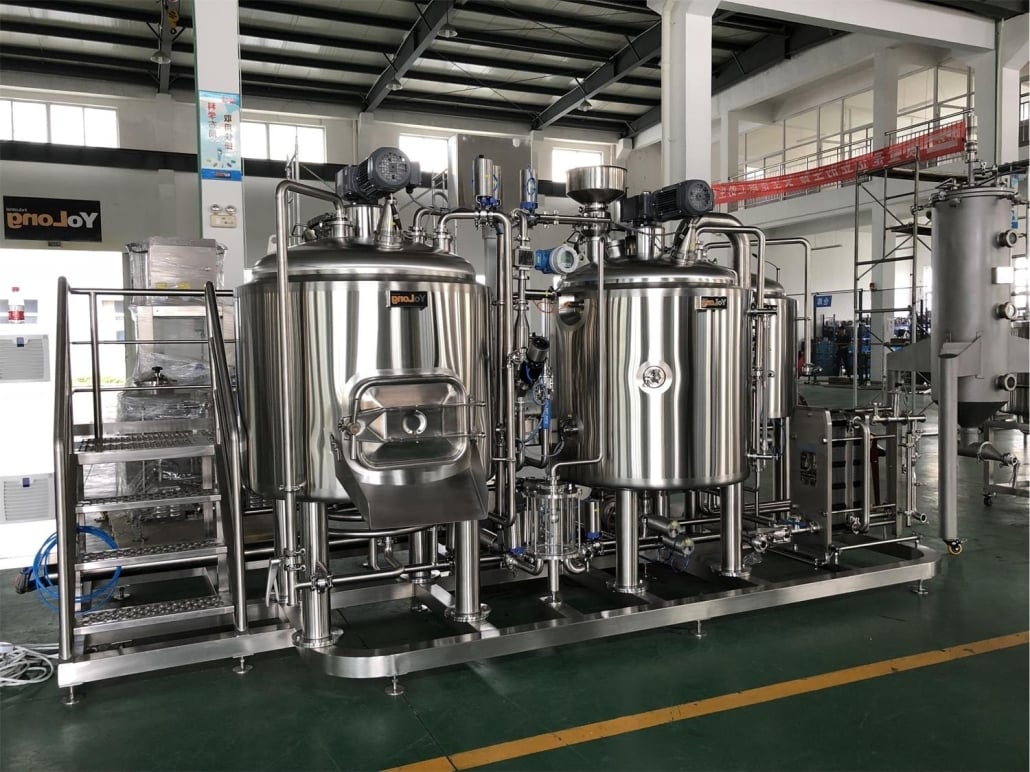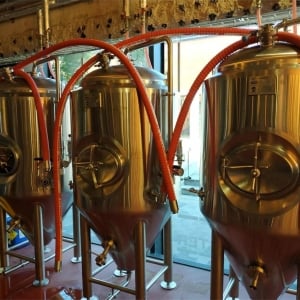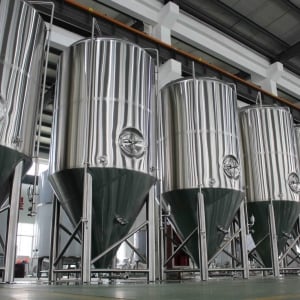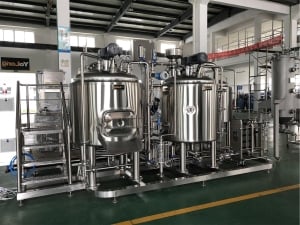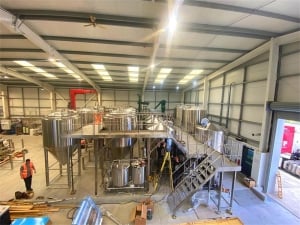Table of Contents
ToggleIntroduction to Fermentation Vessel
Fermentation is a magical process that transforms simple ingredients into flavorful beverages like beer, wine, cider, and mead. A crucial aspect of this process is the vessel in which it all takes place – the fermentation vessel. In this article, we delve into the world of fermentation vessels, exploring their significance, types, and advancements that have revolutionized the art of brewing and winemaking.
The Importance of Fermentation Vessels in Brewing and Winemaking
Understanding the Fermentation Process
Before we dive into the world of fermentation vessels, let’s briefly understand the fermentation process. During fermentation, yeast or bacteria metabolize sugars in the raw ingredients to produce alcohol, carbon dioxide, and various flavor compounds. The fermentation vessel plays a pivotal role in nurturing this process and influencing the final product.
Role of Fermentation Vessels
Fermentation vessels are not merely containers; they are catalysts that enable the alchemy of fermentation. These vessels create the ideal environment for yeast or bacteria to thrive and work their magic. They regulate temperature, provide a hygienic space, and prevent unwanted exposure to external contaminants.
Types of Fermentation Vessels
Fermentation vessels come in various shapes, sizes, and materials. Each type brings unique characteristics to the fermentation process, impacting taste, aroma, and overall quality. Let’s explore the popular types of fermentation vessels commonly used in the brewing and winemaking industry.
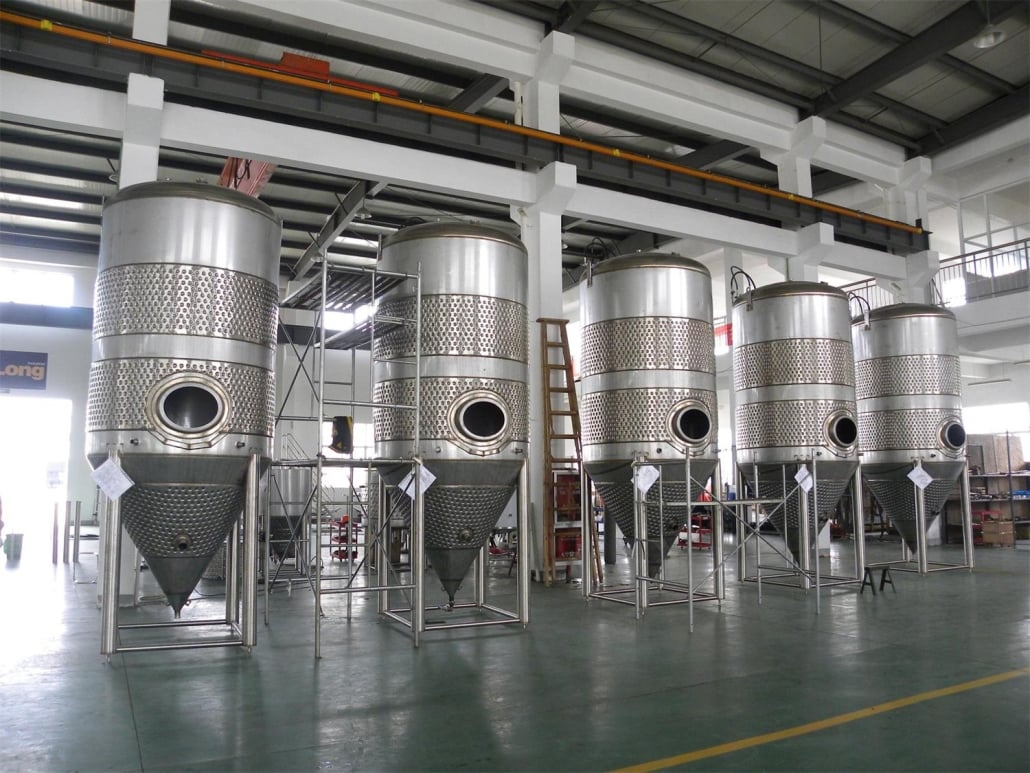
Factors to Consider When Choosing a Fermentation Vessel
Choosing the right fermentation vessel is vital to ensure a successful and consistent fermentation process. Several factors should be considered when making this critical decision.
Material and Construction
Different materials, such as stainless steel, glass, plastic, and wood, offer distinct advantages and limitations. Understanding their properties and impact on the final product is essential in making an informed choice.
Size and Capacity
The size of the fermentation vessel must align with the batch size and production goals. Additionally, considering headspace and liquid expansion during fermentation is crucial.
Temperature Control
Maintaining a stable fermentation temperature is crucial for the yeast or bacteria’s optimal performance. Certain vessels offer better temperature control options than others.
Accessibility and Cleaning
Proper cleaning and sanitization are vital to prevent contamination. Choosing a vessel that allows easy access for cleaning will make the process more efficient.
Popular Types of Fermentation Vessels
In this section, we explore some of the most commonly used fermentation vessels, each with its own set of advantages and disadvantages.
Stainless Steel Fermenters
Stainless steel fermenters are widely used in commercial breweries and wineries for their durability, cleanliness, and temperature control capabilities.
Glass Carboys
Glass carboys are popular among homebrewers for their transparency, allowing visual monitoring of the fermentation process.
Plastic Fermentation Buckets
Plastic fermentation buckets are economical and lightweight, making them a popular choice for beginners and small-scale brewers.
Wooden Barrels
Wooden barrels, once the primary choice for fermentation and aging, still find favor among some winemakers and brewers for imparting unique flavors.
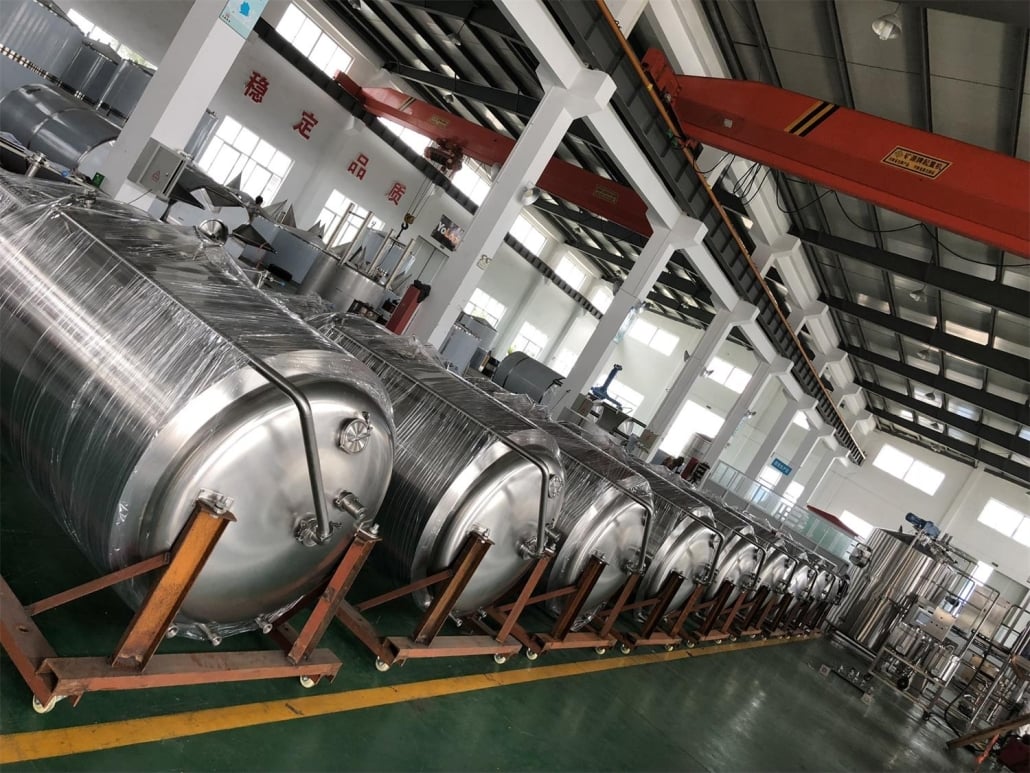
Pros and Cons of Different Fermentation Vessels
Each type of fermentation vessel brings its own set of advantages and drawbacks to the brewing and winemaking process.
Stainless Steel Fermenters
Stainless steel fermenters offer excellent durability and hygiene, but they may lack some of the flavor-enhancing properties of other materials.
Glass Carboys
Glass carboys are visually appealing and easy to clean, but they can be fragile and may not provide sufficient temperature control.
Plastic Fermentation Buckets
Plastic buckets are affordable and lightweight, but they may not be as durable as other options and can be more challenging to sanitize.
Wooden Barrels
Wooden barrels can add unique flavors and character to the product, but they require meticulous care and maintenance.
Tips for Properly Using and Maintaining a Fermentation Vessel
To ensure a successful fermentation process and excellent final product, proper handling and maintenance of the fermentation vessel are crucial.
Sanitization and Cleaning
Maintaining a clean and sanitized vessel is essential to prevent contamination and off-flavors.
Fermentation Temperature Control
Stable temperature control during fermentation helps achieve consistent results and desirable flavors.
Monitoring and Testing
Regular monitoring and testing of the fermentation process allow for timely adjustments and corrective actions.
Avoiding Contamination
Implementing good hygiene practices and handling techniques is vital to avoid unwanted contamination.
Innovations and Advancements in Fermentation Vessels
The world of fermentation vessels is not static; it continually evolves with technological advancements and innovative ideas.
Conical Fermenters
Conical fermenters offer unique advantages, such as efficient yeast harvesting and sediment removal. They are designed to collect yeast and other particles at the bottom of the vessel, making it easier to separate them from the final product.
Fermentation Control Systems
Modern fermentation vessels often come equipped with advanced control systems that allow brewers and winemakers to monitor and regulate temperature, fermentation progress, and other crucial parameters remotely. These smart vessels streamline the fermentation process and provide real-time data to ensure consistency and quality.
Sustainability and Eco-Friendly Vessels
As environmental awareness grows, there is a rising demand for eco-friendly fermentation vessels made from renewable or recyclable materials. Manufacturers are exploring innovative ways to reduce the carbon footprint of brewing and winemaking processes by producing vessels that are sustainable and energy-efficient.
Fermentation Vessels in Home Brewing and DIY Projects
Fermentation vessels are not limited to large-scale commercial operations. Home brewers and DIY enthusiasts can also enjoy the art of fermentation with a variety of vessels suited for small-scale production.
Small-Scale Fermentation Vessels for Beginners
For beginners, small-scale fermentation vessels such as one-gallon carboys or plastic buckets offer an accessible entry point into the world of home brewing. These vessels are affordable, easy to handle, and perfect for experimental batches.
DIY Fermentation Vessel Options
Creative home brewers often indulge in DIY fermentation vessel projects. From repurposing food-grade containers to building custom fermentation chambers, the DIY approach adds a personal touch to the brewing process.
Tips for Home Brewers
Home brewers should pay attention to factors such as proper sanitization, temperature control, and using appropriate fermentation vessels that match their batch size and goals.
The Future of Fermentation Vessels
As technology continues to advance and consumer preferences shift, the future of fermentation vessels promises exciting developments.
Technological Integration
Fermentation vessels are likely to integrate even more advanced technology, with automated sensors, artificial intelligence, and data analytics becoming common features. These innovations will further streamline the brewing and winemaking processes, making them more efficient and consistent.
Environmental Considerations
Environmental concerns will continue to drive the development of sustainable and eco-friendly fermentation vessels. Manufacturers will seek to reduce waste, energy consumption, and greenhouse gas emissions associated with vessel production and use.
Expanding Applications
As fermentation gains popularity beyond traditional alcoholic beverages, fermentation vessels will find applications in other industries, such as probiotics, biofuel production, and pharmaceuticals.
Conclusion
Fermentation vessels are the unsung heroes of the brewing and winemaking world, where magic transforms simple ingredients into beloved beverages. Choosing the right vessel and employing proper techniques are essential for achieving consistent and high-quality results. With advancements in technology and a growing focus on sustainability, the future of fermentation vessels holds great promise.
FAQs
1. How do fermentation vessels impact the taste of the final product?
The choice of fermentation vessel can influence the taste, aroma, and overall quality of the final product. Materials like wood can impart unique flavors, while stainless steel offers a clean and neutral environment for fermentation.
2. Are conical fermenters only suitable for commercial use?
While conical fermenters are popular in commercial breweries, they are also available in smaller sizes for home brewers seeking more precise control over their fermentation process.
3. Can I reuse yeast from a previous batch in a fermentation vessel?
Yes, some fermentation vessels, especially conical fermenters, allow for easy yeast harvesting and reusing in subsequent batches.
4. What are some eco-friendly materials used in fermentation vessels?
Manufacturers are exploring eco-friendly options such as recycled stainless steel, glass, and biodegradable plastics as alternatives to traditional materials.
5. Are there fermentation vessels suitable for kombucha and other probiotics?
Yes, there are fermentation vessels specifically designed for probiotic fermentation, such as those with airlocks and spigots for easy handling and bottling.

